You walk into your living room and see it: your cat nibbling on the leaves of your favorite fern. Or your dog, tail wagging, proudly chewing up a piece of ivy like it’s a treat. Your heart drops. You didn’t know it was toxic. And now, you’re rushing to the vet, wondering: “Which houseplants are actually safe for pets?”
The truth is, many popular houseplants are dangerous for cats and dogs. But the good news? There are plenty that are not only non-toxic—but stunning, easy to care for, and perfect for homes with curious paws.
In this guide, I’ll show you 15 pet-safe houseplants that bring beauty, clean air, and peace of mind—without risking your furry family member’s health.
No more hiding plants on high shelves. No more guilt. Just greenery that thrives, and pets that stay safe.
📚 Table of Contents
- Why Pet-Safe Houseplants Matter
- The 15 Most Beautiful Pet-Safe Houseplants
- Toxic Houseplants to Avoid at All Costs
- How to Safely Introduce Pet-Safe Houseplants
- Care Tips for Pet-Safe Houseplants
- 5 Common Mistakes & How to Avoid Them
- FAQ: Your Top Questions Answered
Why Pet-Safe Houseplants Matter
Let’s face it: pets explore with their mouths. Cats bat at leaves. Dogs sniff, lick, and sometimes eat.
And while a small bite might seem harmless, many common houseplants contain toxins that can cause: – Vomiting and diarrhea – Drooling and difficulty breathing – Kidney failure (especially in cats) – Seizures (in severe cases)
That’s why choosing pet-safe houseplants isn’t just smart—it’s essential for responsible pet owners.
Luckily, organizations like the ASPCA and AKC maintain updated lists of non-toxic plants, so you can decorate with confidence.
But here’s the catch: “non-toxic” doesn’t always mean “harmless.” Even safe plants can cause mild stomach upset if eaten in large quantities. That’s why pairing the right plant with smart placement and training is key.
🔍 Source: ASPCA List of Toxic and Non-Toxic Plants
The 15 Most Beautiful Pet-Safe Houseplants
1. Parlor Palm (Chamaedorea elegans)
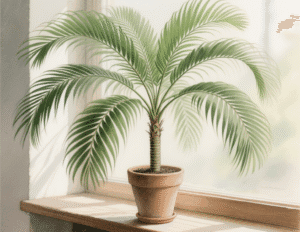
Originating from Mexico and Central America, this elegant palm thrives in low to medium indirect light. It’s slow-growing, making it perfect for small spaces.
Light: Low to bright indirect
Watering: Every 1–2 weeks, when top inch of soil is dry
Humidity: Moderate (30–50%)
Propagation: By seed or division (rarely done at home)
Repotting: Every 2–3 years
Tips: Mist leaves occasionally to prevent spider mites. Keep away from drafts.
2. Spider Plant (Chlorophytum comosum)
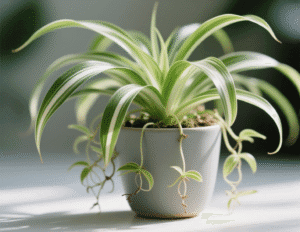
A classic favorite, the spider plant produces « pups » (baby plants) on long stems. These can be propagated easily in water.
Light: Bright indirect
Watering: Every 7–10 days
Humidity: Tolerates dry air
Propagation: Pups can be rooted in water or soil
Repotting: Every 2 years
Tips: Hang in a basket to keep pups out of reach of curious cats.
3. Boston Fern (Nephrolepis exaltata)
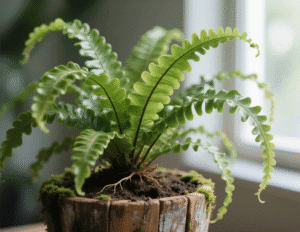
This lush, arching fern loves humidity, making it ideal for bathrooms. It’s also one of the best air-purifying plants.
Light: Medium to bright indirect
Watering: Keep soil consistently moist
Humidity: High (50–80%)
Propagation: By division during repotting
Repotting: Annually in spring
Tips: Use distilled water to avoid brown leaf tips caused by fluoride.
4. Calathea (Prayer Plant)
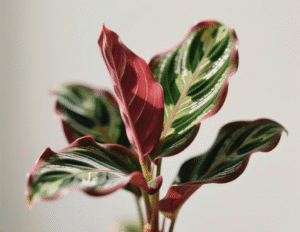
Named for its leaves that fold up at night, Calathea has stunning patterns and prefers high humidity.
Light: Medium indirect
Watering: Keep soil moist, never soggy
Humidity: High (60%+)
Propagation: By division
Repotting: Every 1–2 years
Tips: Avoid cold drafts and direct sun. Use a humidifier if needed.
5. Peperomia (Various species)
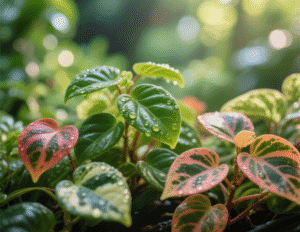
With over 1,000 species, Peperomia offers variety in size, shape, and color. Most are compact and drought-tolerant.
Light: Medium to bright indirect
Watering: Every 2–3 weeks (let soil dry)
Humidity: Moderate
Propagation: Leaf or stem cuttings in soil
Repotting: Every 2–3 years
Tips: Perfect for desks and shelves. Avoid overwatering.
6. African Violet (Saintpaulia)
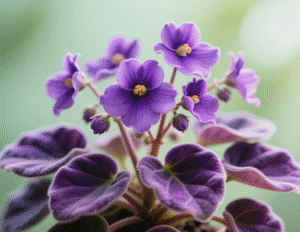
These charming plants bloom almost year-round with proper care. They prefer bright, indirect light.
Light: Bright indirect (east-facing window)
Watering: From the bottom, to avoid leaf rot
Humidity: Moderate to high
Propagation: Leaf cuttings in soil
Repotting: Annually
Tips: Use a saucer to water from below. Keep leaves dry.
7. Hoya Carnosa (Wax Plant)
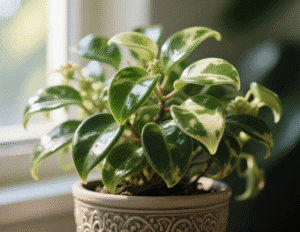
Known for its waxy leaves and fragrant star-shaped flowers, Hoya is a long-lived, low-maintenance plant.
Light: Bright indirect
Watering: Let soil dry completely between waterings
Humidity: Moderate to high
Propagation: Stem cuttings in water or soil
Repotting: Rarely needed (likes tight pots)
Tips: Don’t cut old flower spurs—they rebloom!
8. Burro’s Tail (Sedum morganianum)
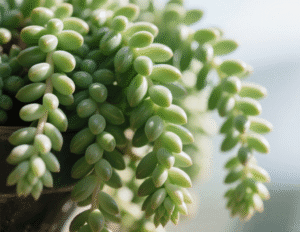
This trailing succulent has plump, blue-green leaves that resemble a donkey’s tail.
Light: Bright indirect to direct
Watering: Every 3–4 weeks (drought-tolerant)
Humidity: Low
Propagation: Leaf or stem cuttings
Repotting: Every 2–3 years
Tips: Handle gently—leaves fall easily. Hang high to protect from pets.
9. Cast Iron Plant (Aspidistra elatior)
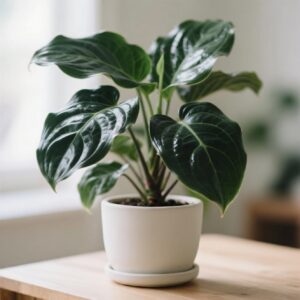
As tough as its name suggests, this plant survives low light, dry air, and irregular watering.
Light: Low to medium
Watering: Every 2–3 weeks
Humidity: Tolerates dry air
Propagation: By division
Repotting: Every 3–5 years
Tips: Perfect for offices or dim corners. Nearly indestructible.
10. Maranta (Prayer Plant)
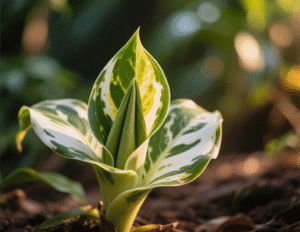
Like Calathea, Maranta’s leaves move with light. It has bold, patterned foliage and loves humidity.
Light: Medium indirect
Watering: Keep soil moist
Humidity: High (60%+)
Propagation: By division
Repotting: Every 1–2 years
Tips: Mist regularly or place on a pebble tray.
11. Bamboo Palm (Chamaedorea seifrizii)
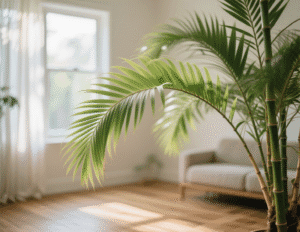
A tall, graceful palm that purifies the air and thrives in medium light.
Light: Medium to bright indirect
Watering: When top inch is dry
Humidity: Moderate to high
Propagation: By seed (rarely at home)
Repotting: Every 2–3 years
Tips: Rotate monthly for even growth.
12. Swedish Ivy (Plectranthus australis)

Despite the name, it’s not a true ivy. It’s a trailing plant with glossy leaves.
Light: Bright indirect
Watering: When soil is dry to touch
Humidity: Moderate
Propagation: Stem cuttings in water
Repotting: Every 2 years
Tips: Pinch tips to encourage bushiness.
13. Areca Palm (Dypsis lutescens)
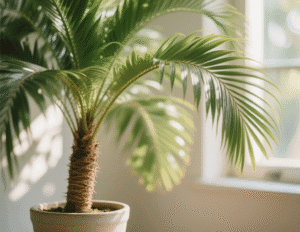
Also called « butterfly palm, » it has feathery fronds and loves humidity.
Light: Bright indirect
Watering: When top inch is dry
Humidity: High
Propagation: By seed (not practical at home)
Repotting: Every 2–3 years
Tips: Mist leaves or use a humidifier.
14. Money Tree (Pachira aquatica)
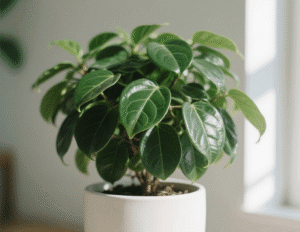
Often braided, this plant is a symbol of prosperity in Feng Shui.
Light: Bright indirect
Watering: Every 1–2 weeks (let soil dry)
Humidity: Moderate
Propagation: Stem cuttings in water
Repotting: Every 2–3 years
Tips: Avoid overwatering—prone to root rot.
15. Christmas Cactus (Schlumbergera)

Blooms in winter with vibrant pink, red, or white flowers.
Light: Bright indirect
Watering: When top inch is dry
Humidity: Moderate to high
Propagation: Stem segments in soil
Repotting: Every 2–3 years
Tips: Needs cool nights (50–60°F) to set buds.
Toxic Houseplants to Avoid at All Costs
These common plants are **dangerous** for pets: – **Lilies** (deadly for cats, even from pollen) – **Philodendron, Pothos, Dieffenbachia** (cause mouth swelling, drooling, vomiting) – **Sago Palm** (fatal if ingested) – **Aloe Vera** (toxic to cats) – **ZZ Plant** (mildly toxic)
Keep them out of your home—or at least in a room your pet can’t access. If you suspect ingestion, call the ASPCA Animal Poison Control immediately.
How to Safely Introduce Pet-Safe Houseplants
- Start with one plant to monitor your pet’s reaction.
- Place it out of reach (high shelf, hanging basket).
- Use deterrent sprays (bitter apple) on leaves if needed.
- Train your pet with commands like « leave it. »
- Rotate plants to keep them safe and your pet curious.
Care Tips for Pet-Safe Houseplants
| Plant | Light Needs | Watering | Pet Safety |
|---|---|---|---|
| Spider Plant | Bright indirect | Every 1–2 weeks | ✅ Safe |
| Parlor Palm | Low to medium | When topsoil dry | ✅ Safe |
| Cast Iron Plant | Low | Every 2–3 weeks | ✅ Safe |
| Boston Fern | Medium to bright | Keep moist | ✅ Safe |
5 Common Mistakes & How to Avoid Them
- Overwatering: Most pet-safe plants prefer to dry out between waterings.
- Ignoring humidity: Ferns and Calatheas need moisture. Use a humidifier.
- Placing toxic fertilizers within reach: Use organic options.
- Not rotating plants: Causes leaning toward light.
- Assuming « non-toxic » means « edible »: Still keep out of reach.
FAQ: Your Top Questions Answered
Q: Are all « non-toxic » plants completely safe?
R: Most are, but large amounts can still cause mild vomiting or diarrhea. Moderation is key.
Q: What if my pet eats a toxic plant?
R: Call your vet or the ASPCA Animal Poison Control immediately.
Q: Can I grow pet-safe plants in a cat-friendly home?
R: Yes! Just place them where your cat can’t reach, or use a deterrent.
Q: Do pet-safe plants clean the air?
R: Yes! Spider plants, palms, and ferns are excellent air purifiers.
Q: How do I know if a plant is safe?
R: Check the ASPCA list of toxic and non-toxic plants.
Q: Can I propagate pet-safe plants?
R: Absolutely! Spider plants, peperomia, and pothos (toxic, so keep cuttings away) are easy to grow from cuttings.
Q: Are succulents safe for pets?
R: Some are, like Burro’s Tail. But many (e.g., Euphorbia) are toxic. Always check.
If this guide helped you, share it with a fellow pet lover. And tell us: which pet-safe plant will you bring home first? 🌿🐾




